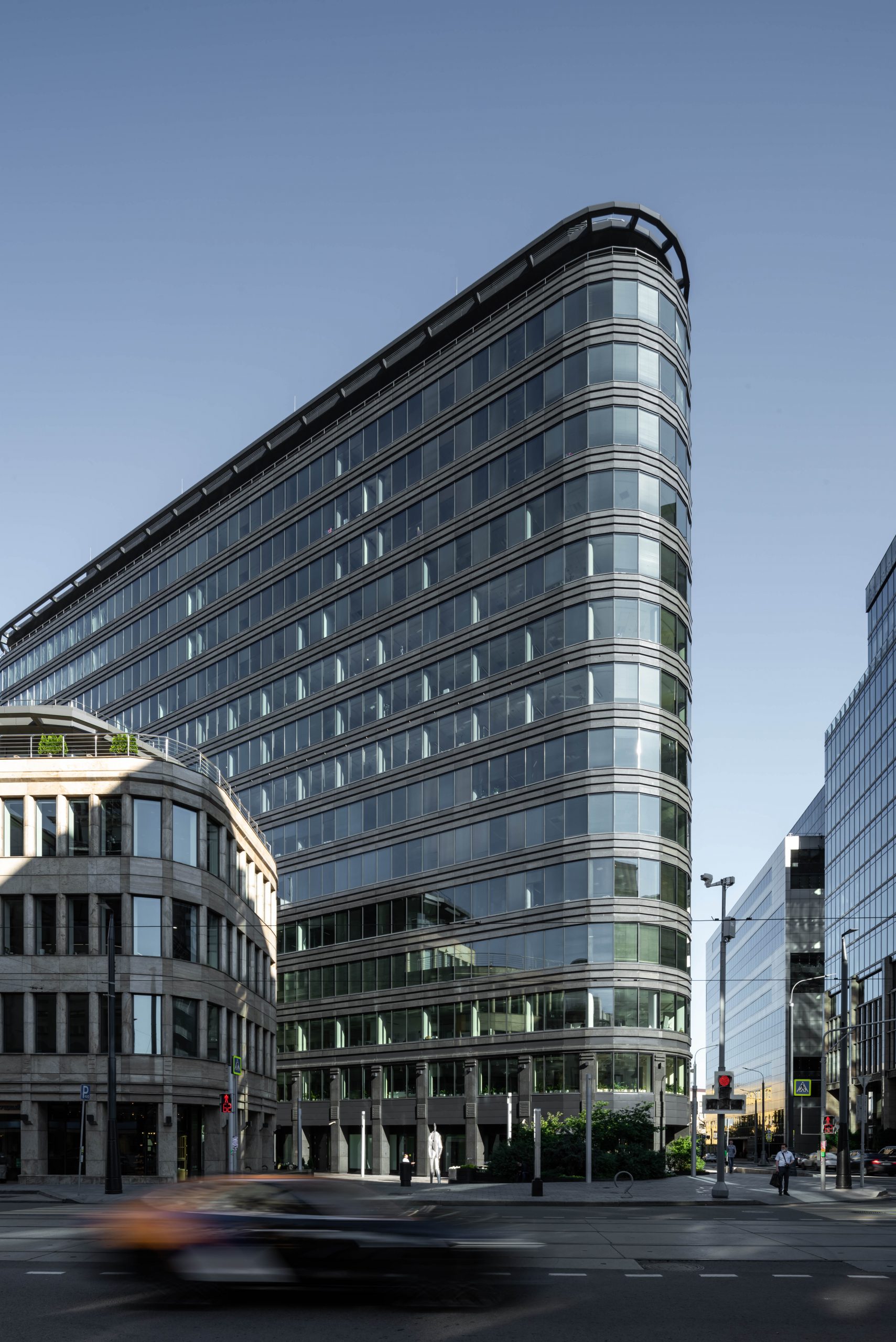This is Russia’s first-ever certification under Fitwel and the Space 1 project has obtained the highest possible rating. O1 Standard acted as certification consultant.
Space 1 Balchug, the Moscow flagship of the Space 1 serviced office network, has been certified to the international Fitwel standard. The certification is the first in Russia by Fitwel and Space 1 Balchug received the highest possible 3-star rating. The certification confirms that the building, which can accommodate 1500 people, enhances the health and well-being of its users. The certification consultants were O1 Standard and Cushman & Wakefield.
The Fitwel standard is based on scientific research proving that the environment, in which a person spends most of the day, affects his/her well-being (both physical and mental) and that a well-designed building with sport and health amenities helps prevent all kinds of illness. More than 830 properties in over 40 countries around the world are already certified to the Fitwel standard. The successful certification of Space 1 Balchug means that the Russian project is now represented in the global Fitwel database.
Fitwel certification requires evaluation in seven categories:
• Impact of the building on local communities.
• Conditions for reducing illness and absenteeism among building users.
• Equal conditions for socially vulnerable groups.
• Creating a sense of well-being among building users and local communities.
• High-quality food catering.
• Health and safety, reduction of criminal risk, safe movement of pedestrians and all types of transport, including bicycles.
• Amenities for sport and physical activity during the day.
The parameters evaluated by Fitwel include: transport access to the building and pedestrian access to its amenities; presence of recreation areas; access to common areas and building amenities for local communities; on-site sports facilities and encouragement to use stairways; regular monitoring of air quality; planning solutions that allow maximum use of natural lighting; quiet areas for relaxation during the day; and a number of other parameters.
Fyodor Noseyevich, Space 1 Operations Manager, commented:
“The new reality requires a rethink of established practices of office operation and maintenance. Today, a building must be not only functional, stylish and modern, but also considerate of its impact on human health. We need to create conditions that prevent illness and help building users to lead a healthy lifestyle. Obtaining Fitwel certification is an important step for us. It confirms that the solutions that we used in this project comply with the best international building management practices.”
Evgenia Soldatova, Manager of Sustainable Development Projects at O1 Standard, said:
“We are honoured to be part of the first successful Fitwel building certification in Russia. The pandemic has been a catalyst for global change in the attitude of tenants to the functionality of their offices, as management priorities have shifted towards safety and comfort. Companies are keen to provide the best possible office environment for their staff, encouraging them to return to the work place and work productively in the future.”
Pavel Yakimchuk, Partner and Head of Project Management Department at Cushman & Wakefield, said:
“Cushman & Wakefield is a recognized leader in the implementation of Fitwel projects around the world: our company has the status of Fitwel Champion. This means that we can provide a number of important benefits to our clients, including accelerated certification, discounts on fees to the certification body, a personal account manager, and much more. It is particularly pleasing that the Fitwel standard has now been implemented for the first time in Russia, at such a landmark project as Space 1 Balchug, thanks to our team. Society today is developing in new conditions, priorities are changing, and this inevitably affects the evolution of certification systems. Fitwel is the youngest of the recognized international building standards, and it represents a breakthrough in the approach to certification, combining a huge array of scientific research and accumulated experience.”
According to data from Cushman & Wakefield, a total of 830 projects worldwide have been certified to the Fitwel standard and over 2400 more projects are awaiting certification.
Space 1 Balchug occupies a 6-storey building in Moscow with total space of about about 12,000 sq.m. and is designed for 1500 work places. The building is arranged around a spacious atrium with a glass roof and includes publicly accessible amenities, quiet recreation areas, meeting and negotiation spaces and service premises (including showers and massage rooms). Special attention is paid to landscaping. The project combines the ready-to-use serviced office format with the Space 1 Custom format that offers a serviced office to the technical specifications of the tenant. Space 1 Balchug will be open for business from September 2021.



